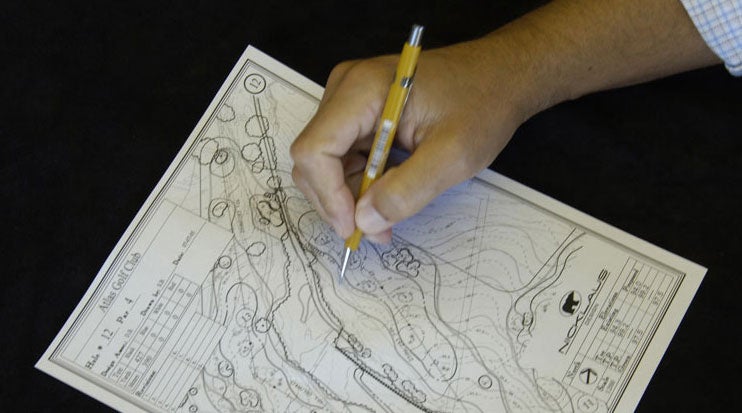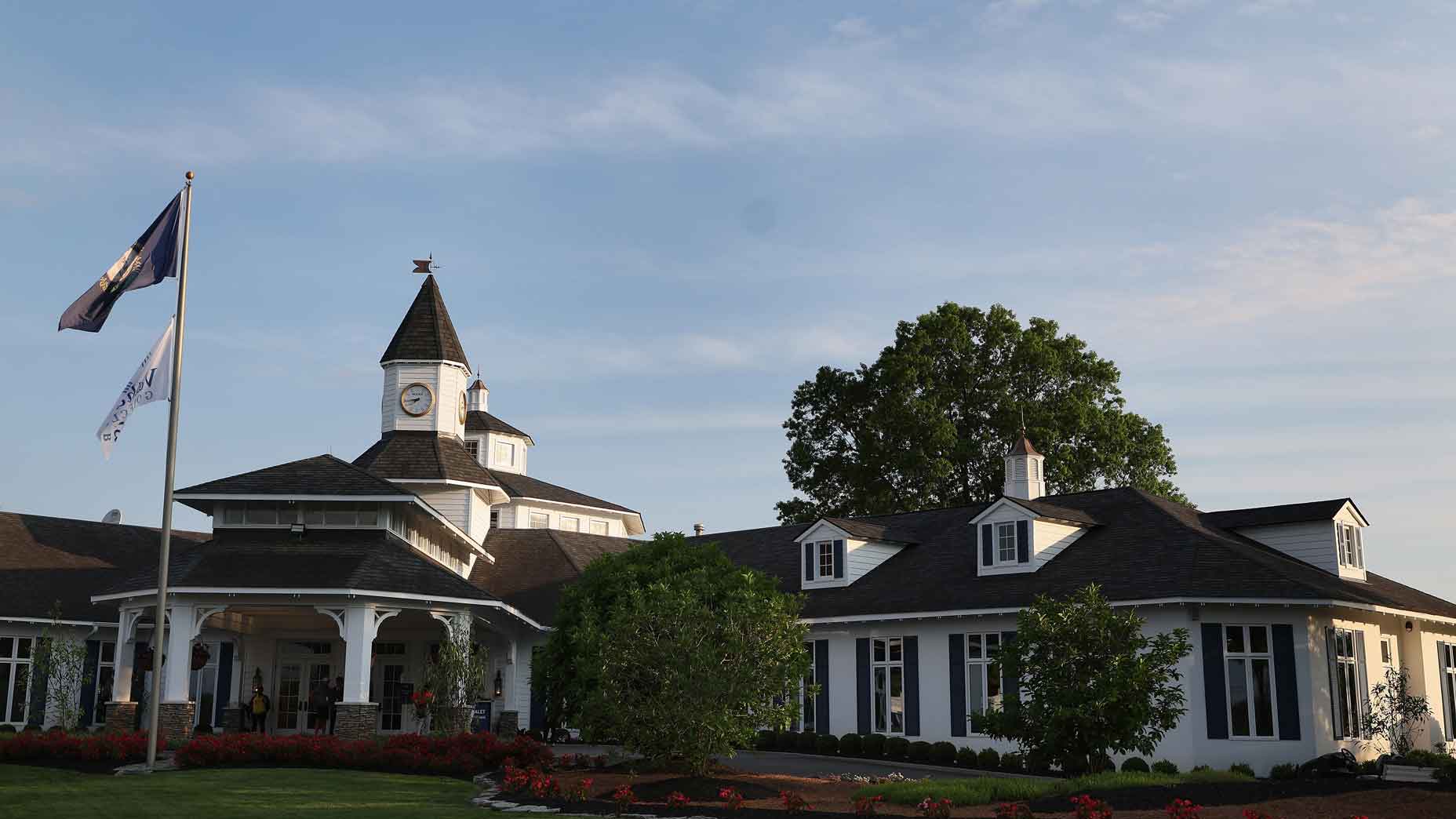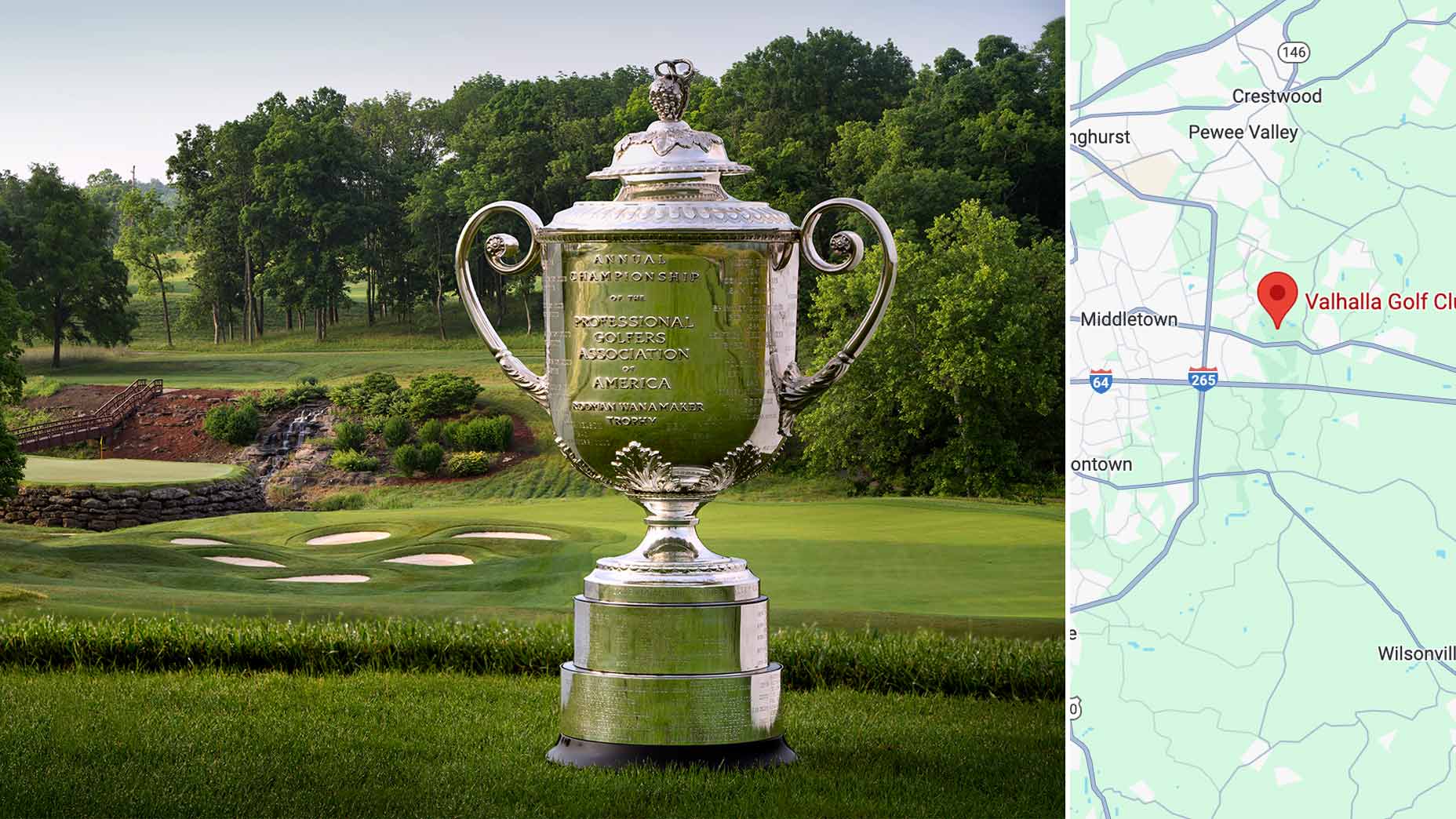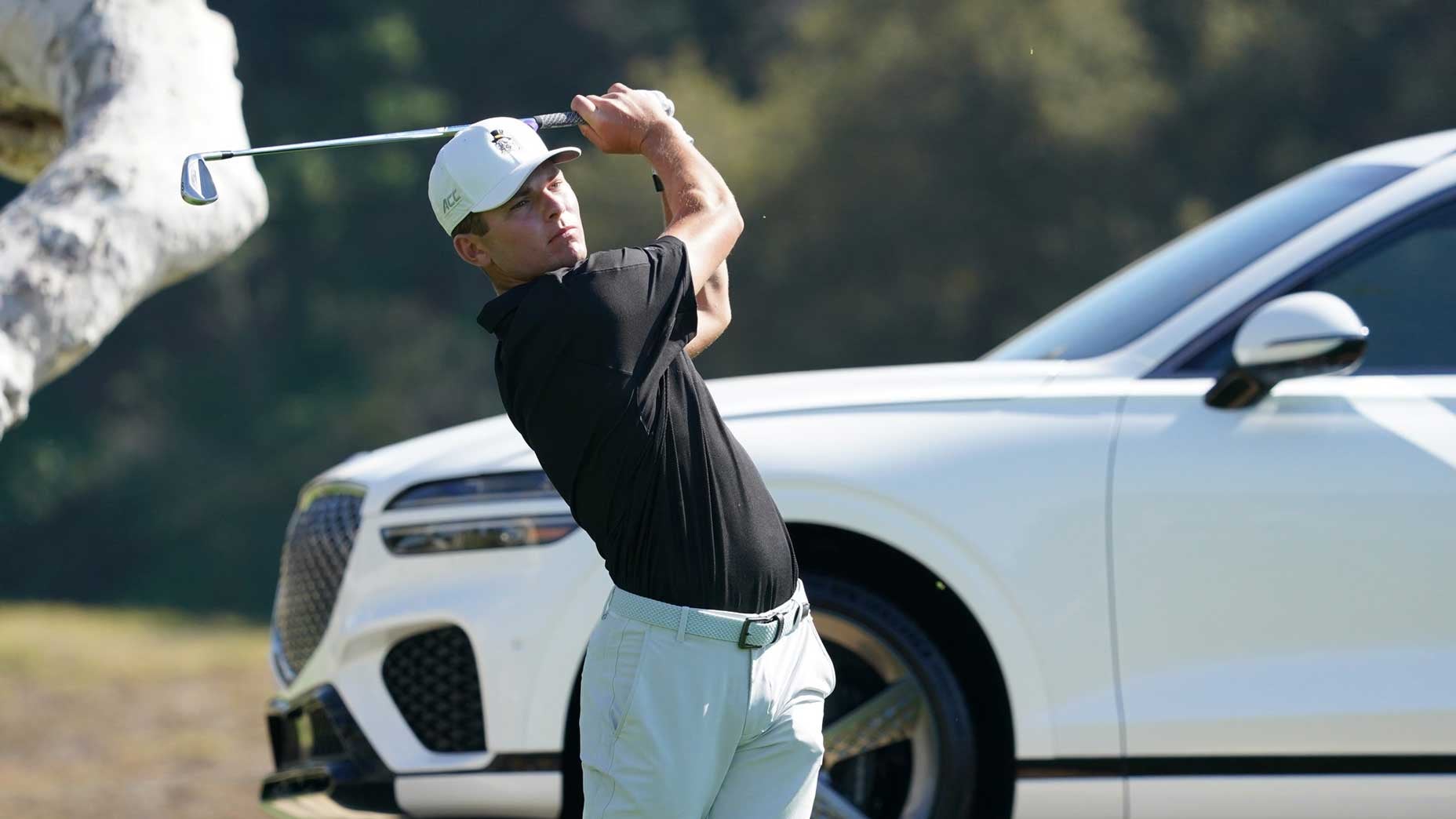What is the origin of the split fairway and why do golf courses utilize them?
- Share on Facebook
- Share on Twitter
- Share by Email
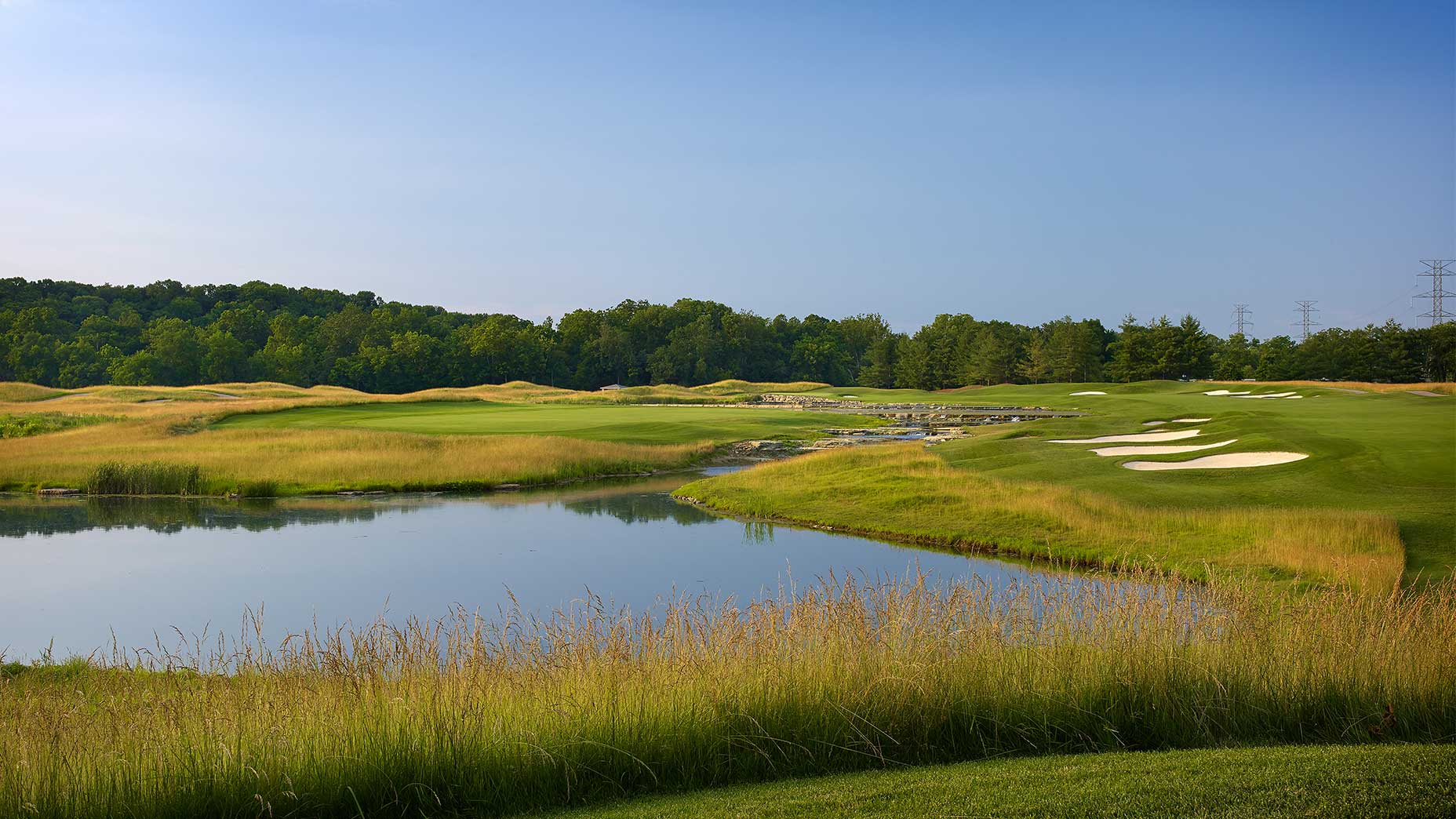
A look at the split fairway on the 7th hole at Valhalla Golf Club.
Getty Images
Welcome to A Beginner’s Guide to Golf Course Design, where we’ll dig into the history, design and meaning of golf course architecture terms you’ve probably heard before but might not fully understand. We’ll explain all of the above in an accessible Q&A format, and better yet, teach you how to identify these features and plan your attack for the next time you see one, saving you strokes along the way. In this installment, we’re breaking down split fairways.
What do you mean by a split fairway?
There are few views in golf more confusing than that of a hole with multiple fairways. But with some thought, these holes can be fascinating, thought-provoking challenges.
A hole with a split fairway is a great way to present strategy to those who don’t like or have enough skill to consider strategy on most holes.
While the strategy on many golf holes comes down to placing the ball down the correct side of the fairway, the overwhelming majority of golfers don’t have the skill to be that exact. The ideal solution is to improve fairway width, but that is often expensive to maintain. In its place, architects have turned to split fairways.
But while they’re built to inject energy and creativity into a round, split fairways can sometimes do the opposite. If one of the fairways is rarely used, the hole loses its strategic value. There has to be a distinct reason for each fairway and, ideally, an obvious risk/reward element to each choice.
So, you want to design a golf hole? A beginner’s guide to the do’s and don’tsBy: Josh Sens
But what exactly is the point to more than one fairway?
A common risk/reward element of a split fairway hole involves distance. This is common on par-5s, where if you aim at a tougher fairway, the green may be reachable in two. If you play to the safer fairway it will be easier to hit but will leave you with a much longer track to the green.
Another strategy for split fairways is to have the better option dictated by the day’s conditions and pin position. In this instance, it should be equally difficult to find either fairway. One of the big reasons for having multiple options is to introduce doubt into the player’s mind — to leave a player asking, which way should I play this? If the answer is obvious and the same to everyone, there isn’t any added strategy or intrigue to the hole.
Many think that a centerline bunker is an effective addition to a split fairway because it presents options. On either fairway, you can stay short of the bunker or try to carry it. It also creates the opportunity for a great recovery shot. It’s not uncommon to see water, a clump of trees, a large bunker, or a waste area serve as the divider between fairways.
The key is the balance between the two options. Depending on the day, either fairway can play as totally different holes. Part of great golf design is having a course that is a new and exciting challenge each time it is played.
Field guide: This Colorado course is skyrocketing up the Top 100 in the World rankingBy: Christian Hafer
The intrigue of many great golf holes is that they take a few rounds (or a few hundred rounds) to find the best strategy for attacking the hole. That isn’t exactly the case with many split fairways. The challenge and decision is often clear.
As with any good strategic hole, a split fairway is a question of risk and reward. Do you risk hitting a harder fairway to have an easier next shot, or play it safe?
So what should I think about when I see one of these holes?
There are plenty of things to consider on a hole with more than one fairway, so take a moment on the tee box and make the best decision for your game. Where are your strengths? Is your best club your driver, or would you rather show off your iron skills? Are you at a point in a match or round where you need (or can afford) to take a risk? What are you hoping to accomplish on this hole? All of these should factor into which fairway you choose to aim at. Most important, once you make a choice, don’t second guess it. Commit to your plan.
Where are some examples of holes with more than one fairway?
No. 8, Riviera
The Riviera website features a quote from George Thomas on split fairways: “Holes with double or triple, or even more fairways or landing places, present unlimited possibilities to our golf course development.”
On the 8th at Riv, you can take the easier tee shot to the right, which leaves a long approach shot over a barranca, or take a risk off the tee and go for the narrower, left fairway that usually leaves an easier approach. Riviera is home to some of the most iconic holes in the world, the 8th is just another great example.
8th hole at Riviera: 1994, 2007, 2016
— Garrett Morrison (@garrett_TFE) February 16, 2019
👍 The notion of restoring the double fairway
👎 General execution, starting with the Shadow Creek shaping pic.twitter.com/hxMWbLhK2w
No. 7, Valhalla
The Jack Nicklaus-designed major venue also features a split fairway hole. The par-5 7th hole has a semi-island left fairway and a right fairway that is much easier to hit. This hole is all about risk and reward. Going for the left fairway is risky, but if you reach safely, you can cut down the hole yardage dramatically versus the longer, safer right fairway. While playing down the left cuts off significant yardage, it is still a carry over water all the way to the green, so you have to think backward from the green to the tee about the best way to attack the hole.
No. 14, Saguaro course at We-ko-pa
Bill Coore and Ben Crenshaw also have some split fairways on their resume. A great one can be found on the Saguaro Course at We-Ko-Pa in the Arizona desert. On this desert course, the par-5 14th hole curls to the right and has a second fairway that can cut down the yardage acting as an island within the desert sand. If you can find the right fairway, you might have a chance of getting home in two, with a clear view of the green and no bunkers in front. Playing to the left fairway has some bunkers to contend with for running shots at the green, and the angle of attack isn’t quite as good. Coore and Crenshaw are masters of creating strategy, and this hole has plenty of that.
No. 12, Talking Stick North (O’odham)
Coore and Crenshaw have another great split fairway hole in Arizona, this time at the Talking Stick O’odham course. The par-4 12th called “Red Mountain” has out of bounds down the left, and plenty of room to play it safe to the right fairway. The hole is 392 yards from the back tees with a 237-yard carry to the left fairway that plays right up to the green. If you hit the safe shot out to the right, you have plenty of room to work with, but a longer approach with a sandy waste area just short of the green. The OB left will scare many away, but the brave who can pull off the shot will certainly be rewarded.
Latest In Travel

Golf.com

